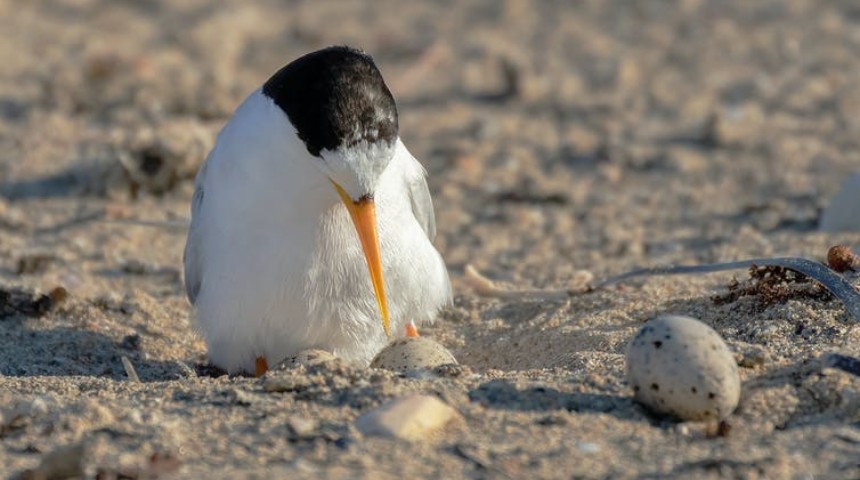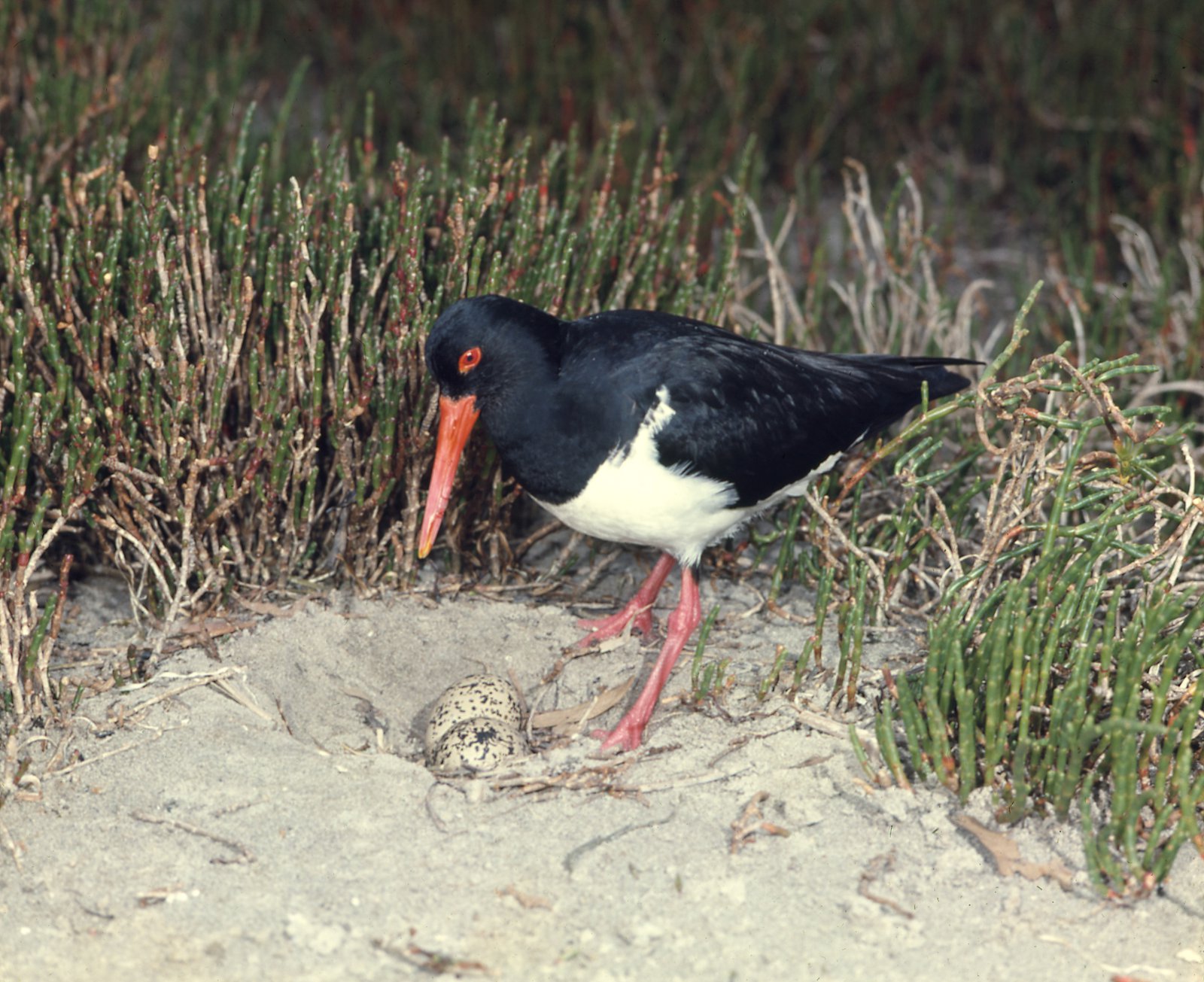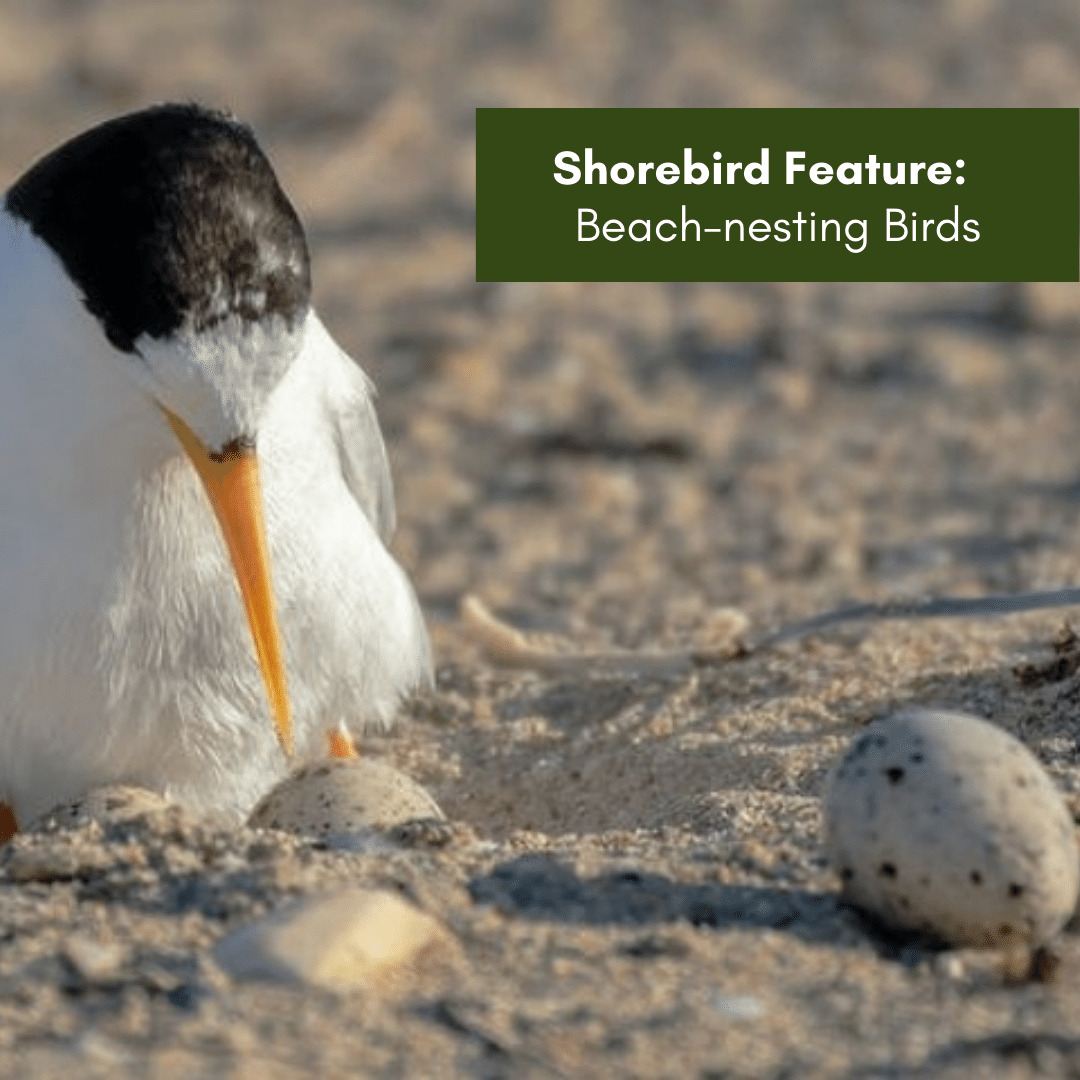Nesting season has begun for our local beach-nesting birds! These shorebirds and seabirds are extremely vulnerable to disturbance from people during this time and, unfortunately, these warmer months are also when humans flock to the beaches.
Disturbance during nesting and egg-incubation can lead to unsuccessful clutches and juvenile fatality and, therefore, population decline.
The Hunter is lucky to host several species of beach-nesting birds including:
- Pied Oystercatcher (Endangered in NSW)
- Sooty Oystercatcher (Vulnerable in NSW)
- Beach Stone-curlew (Critically Endangered in NSW)
- Red-capped Plover
- Little Tern (Endangered in NSW)
All of these species rely on our local coastline habitat to successfully breed, so it’s our job to give them the best chance possible to produce their next generation- especially those listed as vulnerable, endangered and critically endangered. These birds are protected by NSW legislation and supported by the actions of NPWS, Councils and dedicated volunteers.

Image source Murdoch University
Their eggs and nests are strategically camouflaged to prevent predation, however, that can lead to trampling and destruction by 4WD’s, people and dogs.
Keep a lookout for fenced-off areas on beaches and coastlines, and give these areas a wide berth – at least 200m.You’re likely to see these at Worimi Conservation Lands as the nesting season progresses to protect Pied Oystercatcher nests.
The Critically Endangered Beach Stone-curlews have recently been recorded breeding in the Hunter. These birds lay just one egg per clutch. If the adult is disturbed by an off-leash dog, the egg can over cook in the sun due to improper incubation, further increasing their risk of extinction.
Follow this advice from NPWS to help keep these beach-nesting birds safe:
Look out for bird nesting signs or roped-off nesting areas on the beach and follow the advice.
- Walk your dogs on dog-friendly beaches only and always keep them on a leash, unless you’re on a designated off-leash beach.
- Drive only on designated beaches and keep below the high-tide mark.
- When you’re near a nesting area, stick to the wet sand and give the birds minimum 200m of distance
- Get to know our shorebirds & report sightings of these threatened birds to the Environment Line or via Birdata.
- Take 3 for the sea, or 4 for the shore – pick up rubbish and dispose of it thoughtfully.

Image source Australian Museum
Register Your Interest as a Citizen Scientist for Shorebirds

Assist University of Newcastle PhD Candidate, Mattea Taylor, in disturbance monitoring of Shorebirds around high tide.
These surveys will be conducted over consecutive months, from October 2022 to April 2023.
Register your interest here to become a Citizen Scientist for Shorebirds of the Hunter Estuary, an internationally protected Wetland (Ramsar Site).
https://docs.google.com/forms/d/e/1FAIpQLSfSl3nI4mxTeWddhyWBvgC9xCvWbtpqYZBsJOYhLaS1yS2QlQ/viewform
Further details to come.
Contact Gabrielle – hunterlandcaregabrielle@gmail.com
or Mattea – mattea.taylor@uon.edu.au

